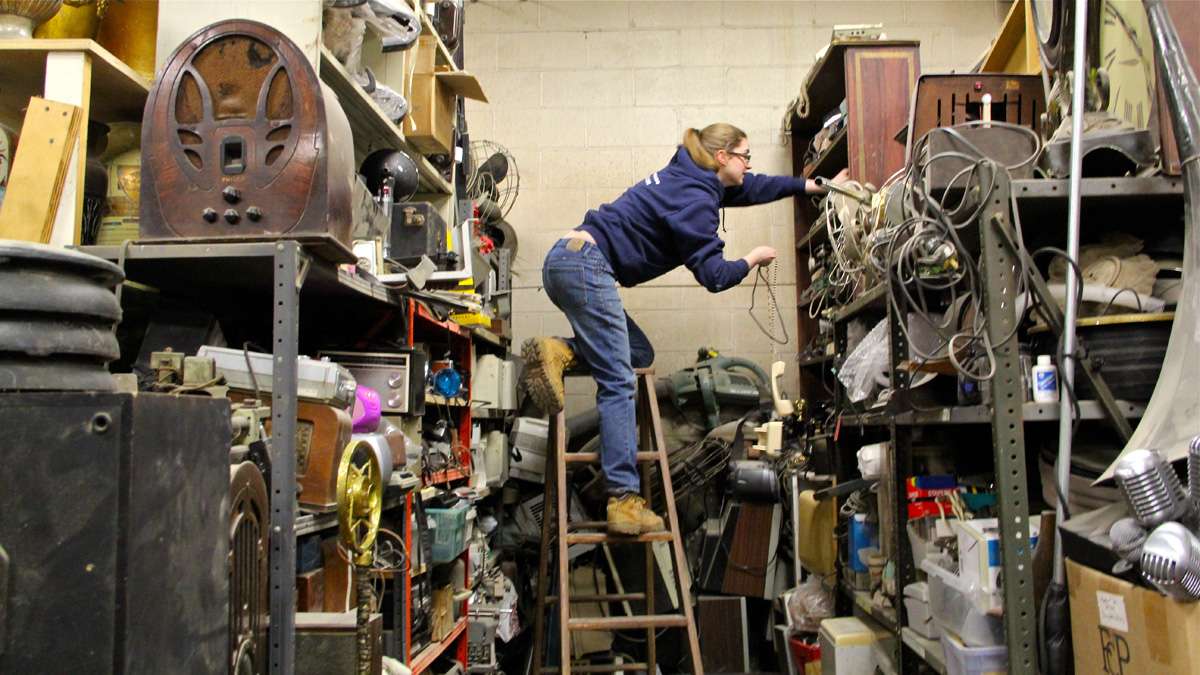Walnut Theatre setting the stage for communal prop room
Listen-

-

-

-

A sign outside the Trolley Car Diner in Mt. Airy. (Bas Slabbers/for NewsWorks)
-

Local IBEW 98 pickets near the Trolley Car Diner. (Bas Slabbers/for NewsWorks, file)
-

-

-

-

-

-

-

-

-

-

Performance companies in Philadelphia soon may be able to tap into a centralized library of props and scenery following the Walnut Street Theatre’s purchase of an 85,000-square-foot warehouse in Port Richmond.
For about a decade, it had been renting less than a third of the space for its prop construction, backdrop painting, and storage.
“We’ve been turfed out of a couple places over the years, and we always wanted to buy something to control our own destiny,” said Bernard Havard, president of the Walnut Street Theatre.
By next year, Havard would like to see half of that total space devoted to creating a sort of theatrical library where area performance companies could store their props and rent them out to other companies.
“If we can move all the props to the upstairs storage area, and combine it with other companies’ props, we can digitalize pictures of those properties and get them on a big reference,” said Havard. “People can go into the reference, see what we’ve got, contact us, and make arrangements to use those props in other shows at a modest cost.”
The idea is still in its infancy, and the Walnut Street Theatre is still crammed into 26,000 square feet of space it has been renting, waiting for the rest of the warehouse to be prepared to receive its stores.
For most theater companies, 26,000 square feet for props and scenery would be more than enough. But the Walnut Street Theatre has two simultaneous production seasons on two separate stages – the Mainstage and the smaller Independence Stage. Plus, it has a traveling show.
“Driving Miss Daisy” closed at the Walnut last week, but on the 3,000-square-foot floor of the paint deck, a second set of “Daisy” backdrops is being prepared for the show’s West Coast tour. In the adjacent room, props are being constructed for the “Beautiful Boy,” opening next week. As soon that’s done, work will begin immediately on sets for “Arsenic and Old Lace,” opening the second week of March. Then there are three more shows before the season ends.
“During our last production of ‘Elf,’ we took the paint shop to the second floor because we needed more space,” said production manager Joel Markus. “This is a pretty good space for our paint deck, but we could have more people working if we had more space.”
A dramatic move
The Walnut Street Theatre, which spent about $250,000 on roof repairs and a climate-control system for the entire building, has started moving tens of thousands of props to the newly acquired upstairs space.
Everything you can think of is stacked, floor-to-ceiling: pushcarts, currency, cutlery, helmets, firearms, furniture, mirrors, chandeliers, telephones, rugs, pianos, sconces, radios, and two coffins. There are several broken speakers.
“We’ve done shows like ‘Les Miz,’ that has lots of broken furniture on stage,” said prop master Glenn Sears. “Prop masters tend to be pack rats, and tend to hold onto anything, because at some point it could be turned into something else.”
Sears, who has been working for the Walnut for 13 seasons, said the objects are mostly organized in his head.
“It’s just remembering ,’Oh, when we did this show, we had that. So it should be over here in this part of storage,'” said Sears. “Mainly, it relies on our memory.”
As reliable has his memory might be, the Walnut appreciates that might not be the best storage-retrieval system.
Other companies short of space
Meanwhile, other performance companies in Philadelphia have their own storage issues. The Pennsylvania Ballet recently moved into a new building on North Broad Street, but left all its props and scenery at its former space in the East Falls neighborhood.
“We lease 12,000 square feet of space, and it’s not ideal space,” said Michael Scolamiero, ballet executive director. “It’s costly. It’s not as dry as I’d like it to be. It’s not in Center City – which isn’t the end of the world, but something closer to the [Academy of Music] would be ideal.”
There are several hurdles to making the communal prop storage and retrieval system work. First, the building still has one remaining tenant, who lease expires next year. More importantly, regional performance companies have to like the idea of keeping their archive of objects and scenery at a location they do not own, and do not wholly control.
“The biggest issue is going to be trust,” said Havard, who said there is a similar system in Toronto. “Who’s controlling it? Who’s making money? Who’s not making money?”
WHYY is your source for fact-based, in-depth journalism and information. As a nonprofit organization, we rely on financial support from readers like you. Please give today.





